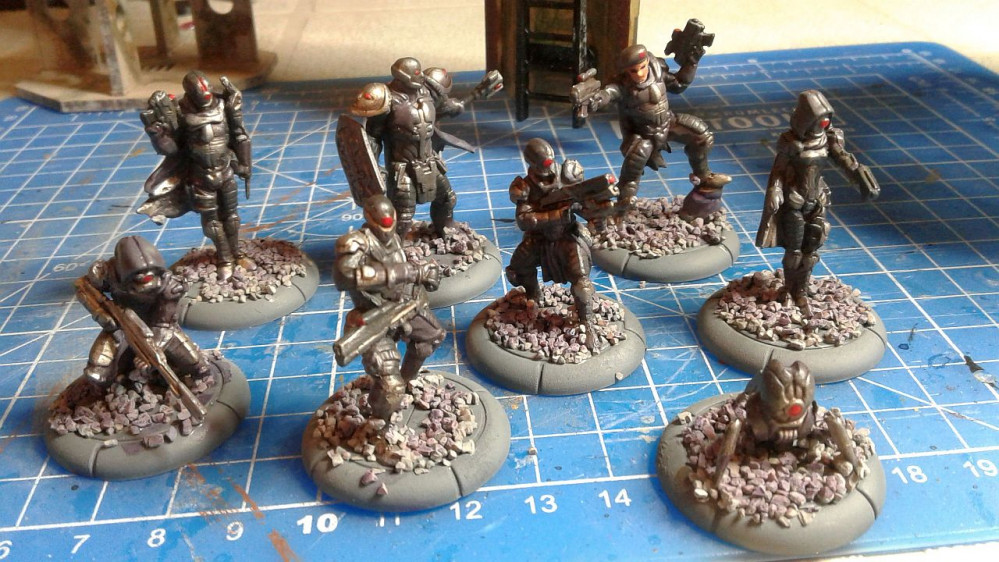
MERCS Recon Gameplay
MERCS Recon Introduction
MERCS: Recon is a co-operative board game set in the MERCS universe. Produced as a Kickstarter in 2014-15 from Megacon Games, the game was meant to reboot their MERCS tabletop game and add minis and factions, as well as update existing minis from metal to plastic. The Kickstarter was well-funded, but unfavourably received when delays, production issues, and poor communications spiraled into a mess. Ultimately the game was mostly delivered and quality issues and replacements were addressed to a degree, but the general feeling of ill-will about the game and the company itself persisted. Parallel problems with Myth and its expansions ultimately led to a rapid downsizing of the company and the eventual purchase of the Myth line by Ulisses North America. MERCS and other IPs of Megacon appear to be on long-term hold, if not dead.
Yet 2-3 years on, I still pull out my MERCS: Recon games at least once a month. I didn’t go all-in, but got the two base games – Assassination Protocol and Counter Threat – as well as a couple of expansions and the MERCS tabletop rules. The two base games are different versions of the same game that differ in the two included factions, and the tile art and a few of the mission cards and such, specific to factions. In all I have a good range of models from most factions, which gives plenty of options to keep the game fresh.
The Basics
The MERCS world is a near-future Earth where governments have mostly collapsed to be replaced by corporations with special focuses and geographic areas of influence. Players play as the elite security forces of these corporations with access to the best in equipment and training as part of a 5 man team (with 1-5 players controlling them). The Recon board games focus on an infiltration mission into an enemy complex to complete a goal, be it sabotage, theft of corporate secrets, hostage rescue or abduction. The game board is a square grid of tiles that represent the hallways and rooms the player must negotiate and search to achieve their objective. A frame with information tracks surrounds the play area.
The maps are built from the tiles in a fairly freeform fashion with a few rules.
– 4 corner tiles must be in the corners
– there must be an elevator or lobby access point as well as two stairwells
– all rooms must have a connection to a hallway
– any mission specific named rooms must be included.
Mission cards can be chosen or drawn randomly. Mission goal objects (data server, safe, etc.) or employees (administrator, technician) are typically deployed randomly and hidden in named locations. The first step of a mission is usually to interact with one of these objects to reveal the location or conditions of the second goal. Once the second goal is completed, it typically gives an extraction location for the win condition. Each base game and expansion pack also has a set of three linked missions.
As games progress, players are opposed by the AI in the form of OpFor, be it lowly employees, regular security guards or highly trained operatives. OpFor generally start as Agents – coloured disks that are placed at the start of the game dependent on icons on the individual tiles. The disks represent an unknown target – a heat signature, the sound of footsteps. At the start of each turn, an agent movement card will be flipped to describe how these disks will move. It can be descriptive – ‘so many spaces towards the Mercs’ or randomly based on information on each tile. If a disks enters line of sight with a MERC, it immediately stops. Once all agents have moved, if 1 or more are in line of sight, an event card is flipped and the disk replaced with an OpFor based on the disk’s colour and the current Security Level.
Security Level is a game track the MERCs need to manage as increased security brings heavily armed reinforcements instead of lowly employees chatting in the hall. The MERCs actions can increase security level at the end of each turn or automatically by certain events – placing collateral damage disks, completing an objective. Security level 1 will typically have you encounter office staff and specialists, Security level 2 will bring guards with pistols or a dreaded shotgun (dreaded because it almost always causes collateral damage, further ramping up the security level). Security level 3 will bring well-armed and armoured soldiers. Security level 4 will bring operatives equal in ability to the MERCS themselves. Early game is spent trying to manage security impacts until the mission goals are located.































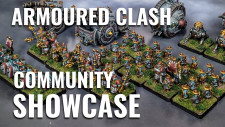









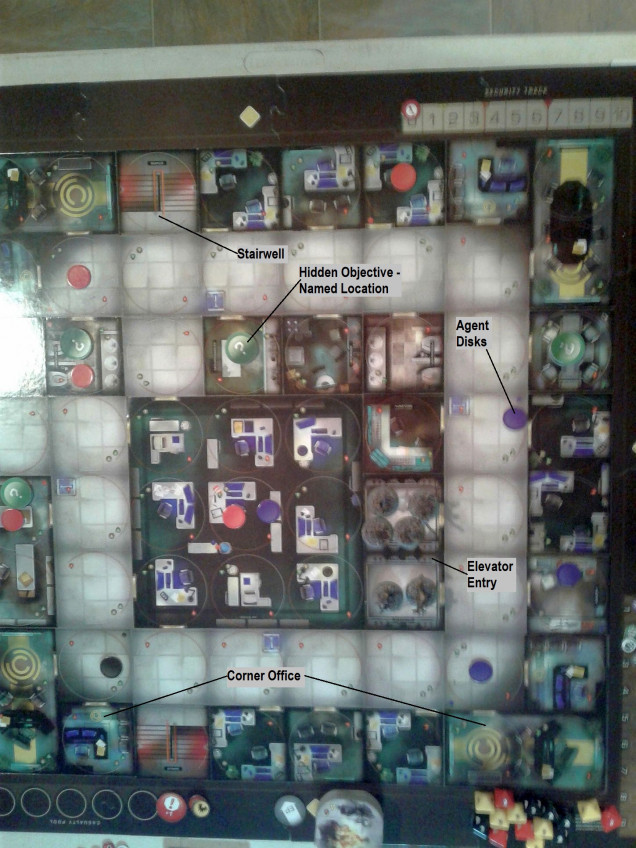
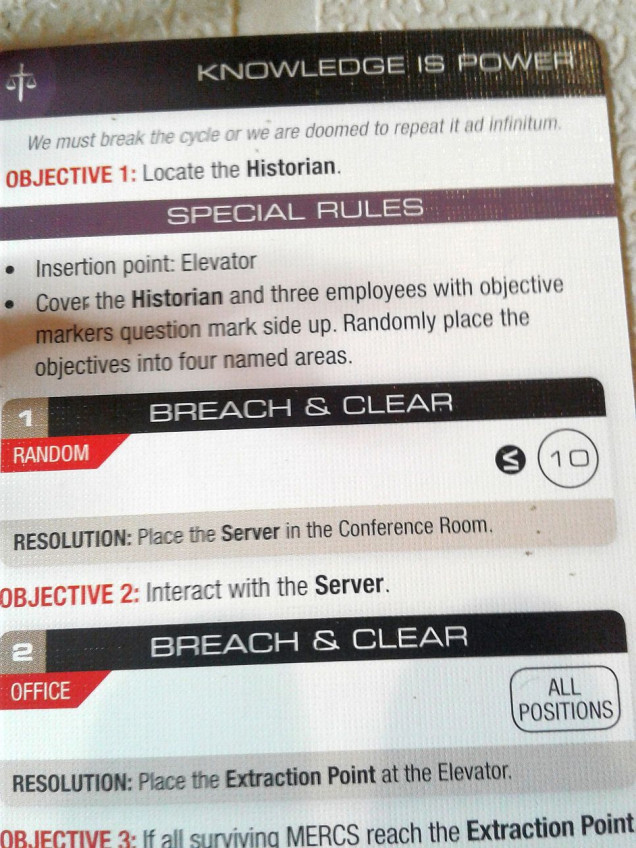
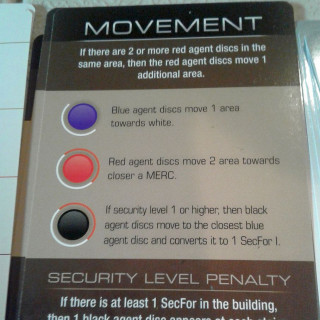
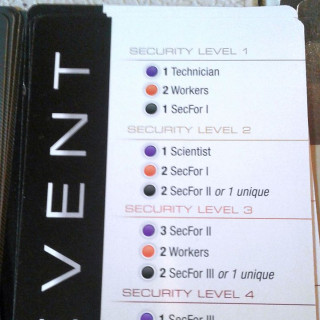
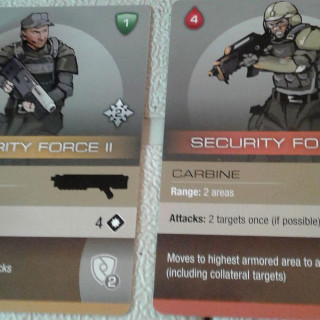
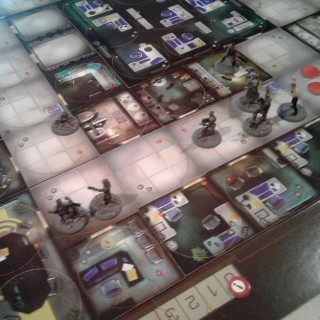

































I am a big MERCS fan. Been playing the tabletop since it came out. Backed Recon mainly just for all the minis for tabletop. Recon is a fun game, some clever mechanics and the AI for the SecFor works really well. My main problem with it (apart from the badly written rulebook and all the delays) was the number of players really made no impact on it. One player controlling 5 models or 5 player with 1 model each didn’t seem to matter. I know its a co-op but it just felt like something was missing to make it a… Read more »
Thanks for the comment @innes . I agree the game stays static regardless of number of players as you are always filling out those 5 slots. I’ve never had a full 5 people play, mostly 2 or 3. The meta aspect of it can be more fun with more people as you are discussing options and trying to manage priority. Far from a perfect game but you rarely have two games that are the same.
I’ve dabbled with the tabletop game a little and keep meaning to get back to it.
Well worth it. I keep meaning to figure out some sort of hybrid using the tabletop rules but with the recon boards, missions, AI, etc. But i’ve never got around to it.